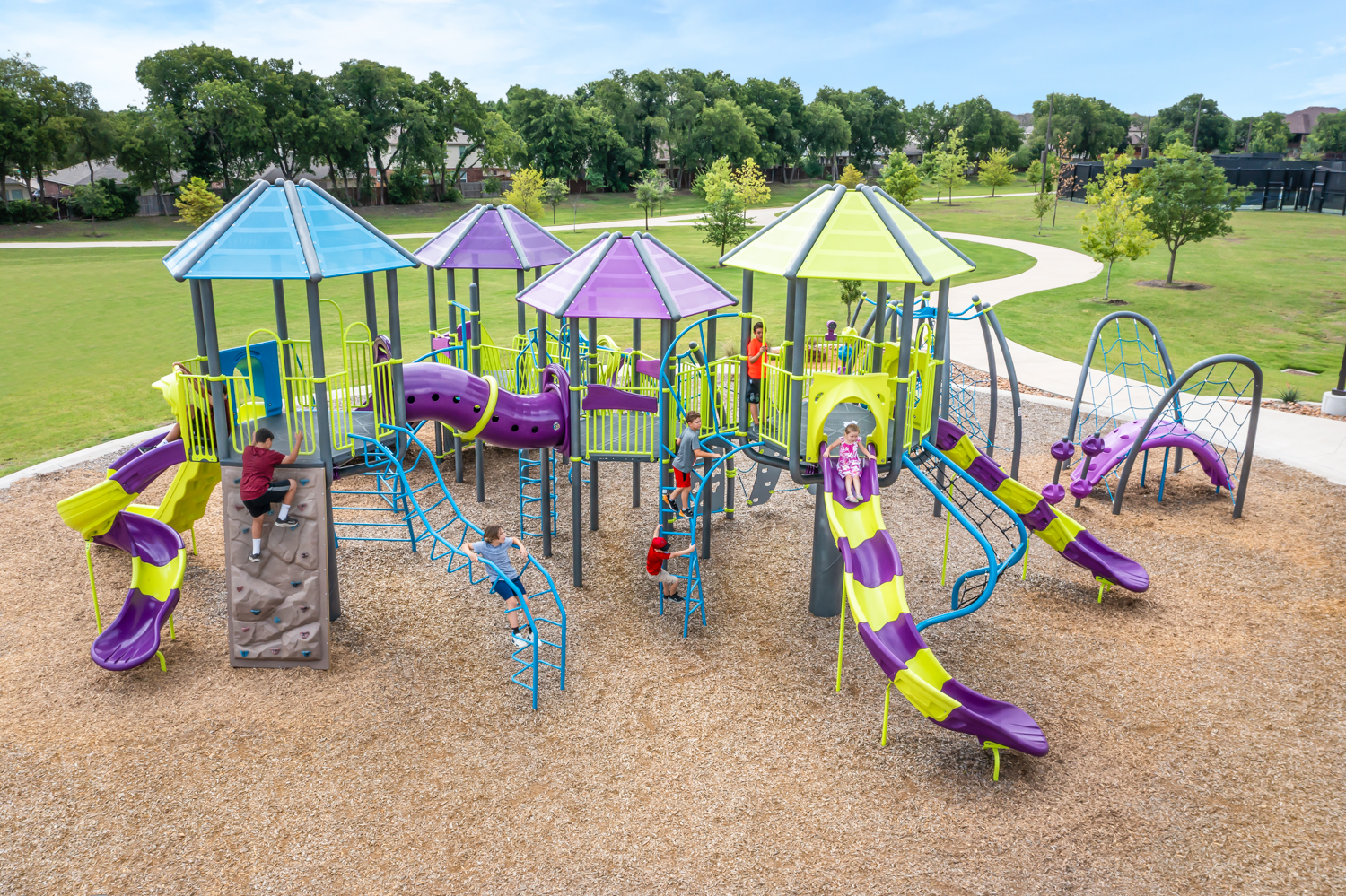There are a variety of different material options to choose from when deciding on new playground equipment.You can customize your indoor or outdoor play environment by selecting surfacing and structural materials that fit your requirements.
What to Consider When Choosing Playground Equipment Surfaces
Making an informed decision is essential since your choice will have a direct impact on safety, durability, and aesthetics. Some of the aspects to bear in mind include:
- Cost
- Intended Use
- Required Upkeep
- Accessibility
- Visual Appeal
By taking the time to consider all your options, you’ll be better able to create an enjoyable and secure playground that fulfills both your requirements and the needs of the community you serve.
Common Playground Equipment Surfaces
Playground equipment structures are usually made up of pressure-treated wood, plastic, coated galvanized steel, or coated aluminum.
Plastic play structures come in a variety of hues and, while not as tough as metal options, are safer should a child fall. These benefits make plastic a great selection for indoor equipment, structures for younger kids, and self-directed play stations. Plastic play systems are also available in components.
This is helpful when your organization has budget constraints. You could start out with just a few components and then make the play structure larger as resources become available. You can hire a project designer who can help you to plan and configure your play equipment in a way that maximizes both your current resources and your future potential space.
Playground equipment is also available with either metal or wood. Metal is typically the material used for busy areas like slides, swings, and climbers in public parks, as it is highly durable and stands up to a lot of wear and tear. Almost all swings are made with metal chains, but these are often coated with plastic to avoid the heat that builds up from being exposed to the sun.
On the other hand, wood is a favorite option due to its organic appearance and ability to be adapted. Wooden play sets can also easily be altered with fun additions and reshaped into different arrangements.
Metal and wood playground equipment both have a long life span and are quite durable. However, to maintain their condition, certain steps must be taken. Metal needs to be sealed to protect against rust and coated to prevent heat-related injuries.
When it comes to wood, more extensive protection from the weather is needed and it must be routinely inspected for signs of damage from the environment. Wood also tends to splinter when it dries, which creates the need for careful scrutiny and more frequent maintenance.
Note that, when choosing your playground equipment surface, you don’t necessarily have to limit yourself to one particular material. Many beautiful play areas have a combination of plastic playground systems for the enjoyment of smaller children, wooden structures for older kids, and metal swings and jungle bars for everyone’s use. In addition, most wooden play structures use a combination of wood and metal components.
Considering Playground Surfacing Materials
When it comes to helping guard kids during playtime, there are diverse playground surfacing materials ranging from loose-fill to unitary surfaces. Here are some of the most commonly used:
- Solid/unitary rubber surfacing
- Artificial turf
- Shredded wood
- Rubber crumb
- Engineered wood fiber
- Sand
All of these options offer protection for children when they take a tumble. When choosing the playground surface, consider how it will look when paired with your chosen playground equipment surfaces.
Churchich Recreation is a full-service, turnkey provider of innovative, reliable, and safe playground experiences, a trusted partner for school & park administrators and landscape architects throughout North and South Carolina. Churchich Recreation looks forward to helping you plan your indoor or outdoor play area. Contact us to get started today.
